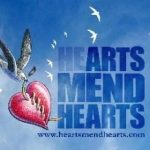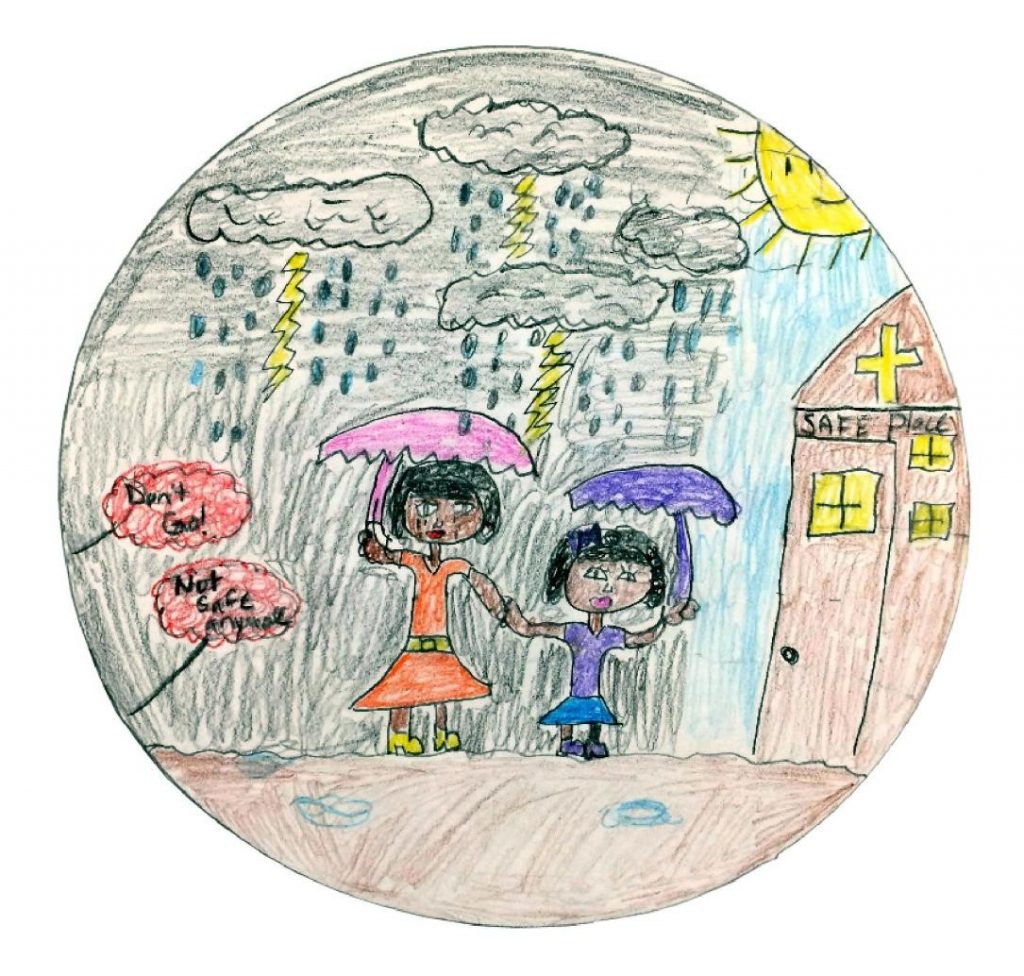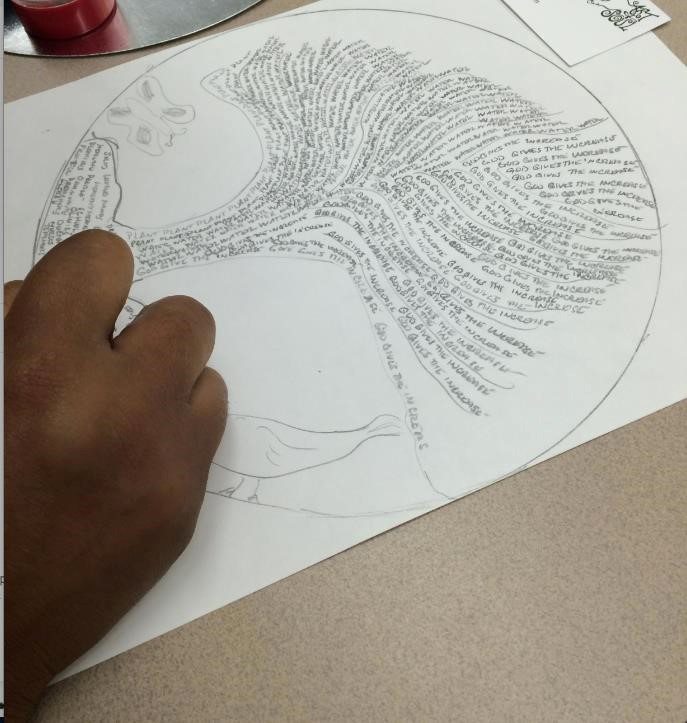By Dianne Tennyson Vincent, MAT, ATR-BC | March 2, 2016 | #WeAreArtTherapists | Trauma
June 17, 2015 was a peaceful evening in downtown Charleston, SC. A regular Wednesday night prayer meeting service was taking place in the historic Emanuel AME Church. After an hour of Bible study and prayer, the unthinkable happened.

A young, unfamiliar white man welcomed to the group pulled a gun and killed nine parishioners, including State Senator Clementa C. Pinckney. A grandmother shielded her grandchild with her own body while they both played dead. The other survivor was told by the shooter that he let her live to tell the story. The killer later said he committed the murders with the hopes of starting a race war.
Charleston’s heart was broken. The next day several mental health professionals and artists decided to pool their talents to help their community grapple with the shock of the massacre. They would use the power of art to help Charleston in its struggle to understand and heal from this savage trauma.
The non-profit Charleston Heals Through Art: HeArts Mend Hearts was formed. My husband’s ad agency created our name and logo and began the work of creating a website. The Charleston County Main Library opened its doors to us, got the word out through the press and helped our agency produce a variety of printed materials for the tens of thousands who turned the Mother Emanuel AME Church into a memorial celebrating the lives taken so senselessly. A vicious act of hate was answered with love and forgiveness.
A former colleague and national board-certified art teacher, Laura DeLaMaza, and I got to work.
I asked friends and associates for mental health professionals to help, and ended up with more than 25 volunteers including therapists, artists, students and other community members who simply wanted to be a part of our work.
- Laura DeLeMaza and Dianne Vincent in front of the AME Emanuel Church
- Word Tree Mandala
Leigh Ann Lichty, MAAT and Barbara Naderi, MA, LPC, ATR-BC are two therapists I would like to acknowledge in particular. Barbara graduated from the University of Louisville’s Institute of Expressive Arts in 1974 and Leigh Ann graduated from the School of the Art Institute of Chicago with graduate work focusing on children who have experienced trauma.
Leigh Ann said of HeArts Mend Hearts: “When I found Dianne and HeArts Mend Hearts, I was inspired and uplifted by the group’s committed and genuine efforts to help our community begin to process our trauma. In the sessions I felt an unmistakable cohesion, even though each group, for the most part, consisted of people who had never met. The art therapy shared in HeArts Mend Hearts not only helped to process the Charleston shooting, but participants began to share other personal traumas and empathize with people throughout our world who have experienced the same or similar events. I feel privileged to have been involved in such an important group.”
Having both benefitted from personal mandala work for decades, Laura and I decided this clinically established art form could guide our community through the process of healing.
We kept the method simple and used the circular containment as a way to express, create, process, heal and even forgive in some cases. After starting out with colored pencils, we eventually offered oil pastels and pre-cut magazine images to participants for the creation of collages within the circle. Participants had the option to just color pre-drawn mandalas or create their own image to see what would emerge from the unconscious. Those who wished could put their work on the wall and share their feelings and insights, and everyone was invited to process at their own comfort level. If participants wanted to just listen, they were free to connect through their physical presence.
Free and open to the public, we initially met for two-hour sessions at the Charleston County Library from July through October three days a week. For the remainder of the year we met on Sundays. Participants ranged from homeless individuals, students, artists, housewives, teachers, Mother Emanuel members, friends, and even co-workers of those who died to then-candidate, Mayor John Tecklenberg and his wife. Our space was a safe haven filled with the comforting smell of essential oils and live guitar music by Chuck Gee, providing acceptance, compassion, connection, and recovery for all who participated.
The concept of community became an important theme in the testimonials of many who participated. It became necessary to mend not only the individual heart, but the joined and connected hearts of the group. “The shootings at the church touched many lives,” remarked one person, “But their forgiveness united everyone.” Another person explained that they learned to look beyond themselves, stating, “Make room for others by thinking less about yourself. It doesn’t happen quickly and maybe it will never happen entirely. Start with compassion. Go from there.”
Other mental health professionals came to share their knowledge about trauma. Their physical presence brought us great support. Two art therapists from out of state also joined us. For all of us, this event reaffirmed the power of what has largely been an invisible practice in the therapeutic field and served to familiarize and promote this unfamiliar healing process to a community mostly unaware of its existence. Many where amazed, even shocked, at the depth and intensity of their experience with art therapy.
One participant commented, “During the very first session, I was amazed by the flood of emotions I experienced followed by the feeling of calmness and peace. I have found this quite beneficial, not only relating to the tragedy of the Emmanuel 9, but to personal events in my life as well. I feel very fortunate to have been led to this group and will attend as often as I am able until it is through.”

“Goin’ to Church” Mandala
“Goin’ to Church” was a piece of art created by a mother who attended our sessions with her daughter. In her image, she and her daughter are walking to church under dark clouds with lightning and rain, an intense metaphor for the burden, anxiety, and fear of walking to church. The words in the red bubble on the left represented evil forces saying “don’t go”, that it was “not safe anymore.” She decided evil was not going to win and was determined to go to church anyway, labeling it “safe place,” surrounded by clear sky and yellow sun. After drawing this image and being able to talk about it, she felt more confident to return to church.
Taylor Hollingsworth, a volunteer College of Charleston student and aspiring art therapist, said, “It is one of the most uplifting experiences to hear someone who has been completely shut down emotionally share their story through artwork. Most significantly, HeArts Mend Hearts has shown the Charleston community that no one has to be alone in their pain. Looking at the circular mandalas hung on the walls of the library, I saw heartbreak and sorrow, but I also saw solidarity and life. With each passing session, our circle of participants grew stronger, like an ever-expanding mandala of human experience. I have seen an immense change in not only the people but myself and my worldview.”
In September we partnered with The Charleston Alliance For the Arts and, with the additional support of other art galleries and artists, worked to create an outdoor community mandala. This event took place at the Charleston Alliance for the Arts OPEN Celebration at the Historic College of Charleston.
All were invited to contribute to the community mandala with personal mandalas, found objects and natural materials in the circle that contained images of the nine victims and three survivors of the shooting. The event was a tremendous success due to the many volunteers working so hard to make it happen. A documentary video was made that follows the community mandala from beginning to end that can be watched on YouTube.

Community Mandala
Find out more about HeArts Mend Hearts by going to the organization’s website and show your support of the project.
Artwork and photos shown in this article are reproduced with participants’ permission.
About the Author
Dianne Tennyson Vincent, MAT, ATR-BC, has degrees in nursing and art, a Master’s Degree in Art Education, and completed her graduate work in art therapy from the University of Oklahoma and the University of Illinois. She has been in private practice for 13 years. She has served with the ArtReach Foundation doing art therapy in Bosnia twice, in addition to Haiti. She lives in Mt. Pleasant with her family where she runs her own art school, Art Connects. As a professional artist, she feels strongly that she must engage in the struggle of creating her own work to be effective as a therapist.


